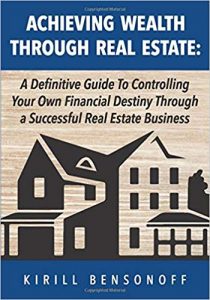Value-add properties are typically homes that cannot reach their market value right now due to poor management, intensive repair requirements, or low demand for property in the area
There are times when investors will come across value-add properties; properties that still have a greater potential to reach. These properties differ quite a bit from fix and flip projects as they are much more labor-intensive than the average flip.
This is what investors need to know about investing in value-add properties, the risks associated, and what you can stand to gain.
Understanding Value-Add Property
A value-add property is a property that has the potential to bring in more income in the future with some effort made towards changing management or bettering the property. The property may be of lower value due to its age, due to deferred maintenance leading to larger disrepair, or poor management.
Alternatively, the property could have previously performed poorly due to unfavorable market conditions and could represent untapped opportunities if the market starts to turn around. Investors that are willing can acquire these properties, improve them over some time, and resell them later for a larger gain or rent them out for income on an ongoing basis.
To get a good return on value-add properties, investors will need to put in notable amounts of capital and sweat equity. A house flipping market analysis can act as a guide.
How To Add Value To A Property
There are several ways to bring value to a property of this nature, which is a recommended investment for investors that have experience with serious remodeling and repairs.
The easiest way to accomplish that value increase is by managing it efficiently and increasing the capital flowing into the project effectively. There should be a focus on filling vacancies as fast as possible once renovations have been completed, to ensure that no extraneous expenses are incurred. Many investors depend on funds raised elsewhere to finance these types of projects.
How the property will be marketed is another key question, especially in a market that has previously gone through a downturn. With general renovations, rental or asking prices for these properties can increase significantly, but if you can’t attract buyers or renters it will be a big loss.
The In's and Out's Of Value-Add Properties
Investors should bear in mind that value-add properties can come with a higher level of risk, but that it can also lead to higher returns. Properties that fall into this category can have histories of low occupancy or rental rates and can require substantial capital and renovation to attract tenants and buyers back to the area for the long-term.
For value-add investors, the returns made from these properties are commonly divided between income and appreciation. The exact breakdown would depend on how light the actual value-add activity is. Holding times for these properties often range from short to mid terms.
Other Factors To Consider
The greatest benefit of value-add properties is that they can push ROI higher than core properties can. By investing some time and effort, the eventual sale of the property can bring a significant influx of cash-flow to the investor. Similar to most commercial real estate projects, there are other advantages the investor will experience like long-term appreciation if they plan to hold the property for some time.
As value-add properties can be riskier to take on, the investor’s handle on the financials of the project will be essential. The renovations going into these projects can be more difficult to complete, and expenses can quickly pile up if a strict budget is not kept to.
Final Thoughts
Working with value-add properties will require the investor to wear many hats at once. They need to ideally have a good feel for renovation or a strong background in construction.
Market analysis is a similarly important tool the investor will make use of, due to market factors being outside of their immediate control. With an investment like this, investors should really know what they are getting into. A good understanding of property management and cash flow in property will also go a long way.
Keen To Learn More About Real Estate Investing
In Achieving Wealth Through Real Estate: A Definitive Guide To Controlling Your Own Financial Destiny Through a Successful Real Estate Business, author and entrepreneur Kirill Bensonoff takes you through the process of starting your own real estate business, step-by-step.
Bonus Tip
If you’re still learning about property flipping, you will be pleasantly surprised to hear that most of the expenses incurred when renovating a fix and flip are tax deductible. This post has a full list of expenses you can deduct when flipping a house.




